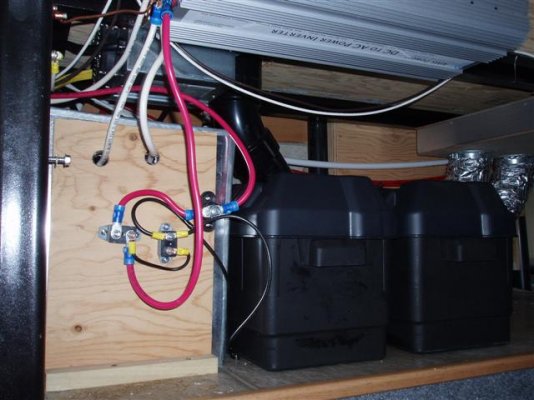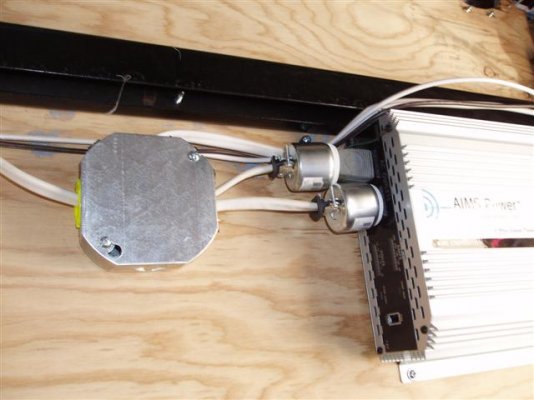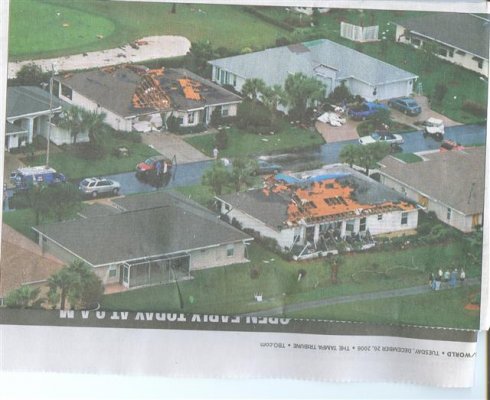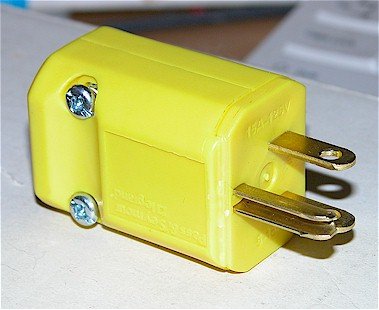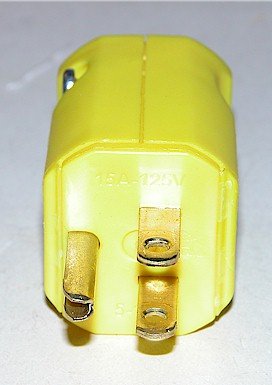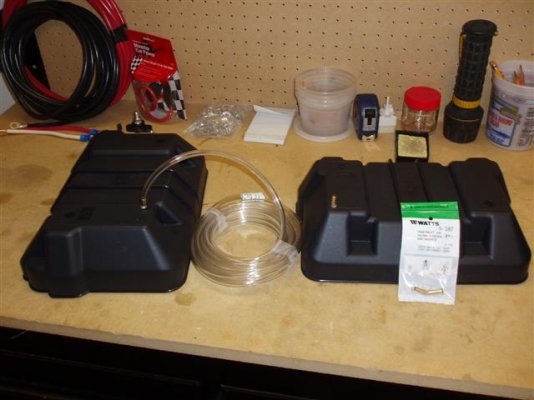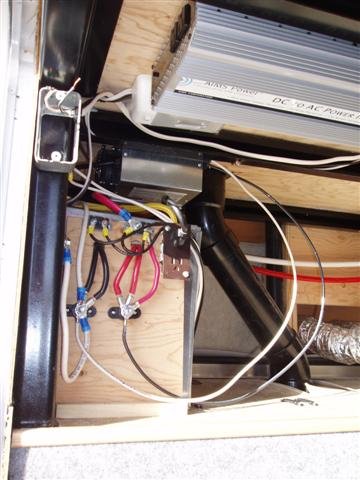BNTorsney
Well-known member
MODIFIED PLYWOOD WALL
I made the plywood wall much smaller to accommodate the two new battery boxes. I wanted to locate the boxes side by side, but had to settle for back to back, because of the toilet down-pipe. I relocated the DC converter to the ceiling over the factory battery box. The DC/AC Inverter was mounted to the ceiling, close the tie box containing the 12ga Romex from the relay. The wiring on the new wall is only temporary, for testing the unit. I plan to replace all the 4ga stranded factory wire, with 4ga battery cable. I will solder the terminals to the ends of the new cable, this combined with the lower resistance of the battery cable wire, will allow more power to run the air conditioner. I have ordered a new 12 volt, 6 position ATC fuse distribution block. In addition, I have ordered 20 and 30 amp thermal ATC circuit breakers. The Buzzman Shortstop circuit breakers are the modified reset type, if tripped, the only way to reset is to remove power; This would require me to disconnect all four of the batteries. The thermal ATC type will reset themselves, after they cool down. With only two batteries installed to date, I could not test the air conditioner. I opted for a test of my Husky 1.5 gallon, 120 volt air compressor. When I plugged the unit in and turned on the inverter, the compressor quickly came to life and only shut off after reaching 120 PSI. The test was a success, according to the current meter on the DC/AC Inverter, approximately 80 DC amps was required to run the compressor.
I made the plywood wall much smaller to accommodate the two new battery boxes. I wanted to locate the boxes side by side, but had to settle for back to back, because of the toilet down-pipe. I relocated the DC converter to the ceiling over the factory battery box. The DC/AC Inverter was mounted to the ceiling, close the tie box containing the 12ga Romex from the relay. The wiring on the new wall is only temporary, for testing the unit. I plan to replace all the 4ga stranded factory wire, with 4ga battery cable. I will solder the terminals to the ends of the new cable, this combined with the lower resistance of the battery cable wire, will allow more power to run the air conditioner. I have ordered a new 12 volt, 6 position ATC fuse distribution block. In addition, I have ordered 20 and 30 amp thermal ATC circuit breakers. The Buzzman Shortstop circuit breakers are the modified reset type, if tripped, the only way to reset is to remove power; This would require me to disconnect all four of the batteries. The thermal ATC type will reset themselves, after they cool down. With only two batteries installed to date, I could not test the air conditioner. I opted for a test of my Husky 1.5 gallon, 120 volt air compressor. When I plugged the unit in and turned on the inverter, the compressor quickly came to life and only shut off after reaching 120 PSI. The test was a success, according to the current meter on the DC/AC Inverter, approximately 80 DC amps was required to run the compressor.

